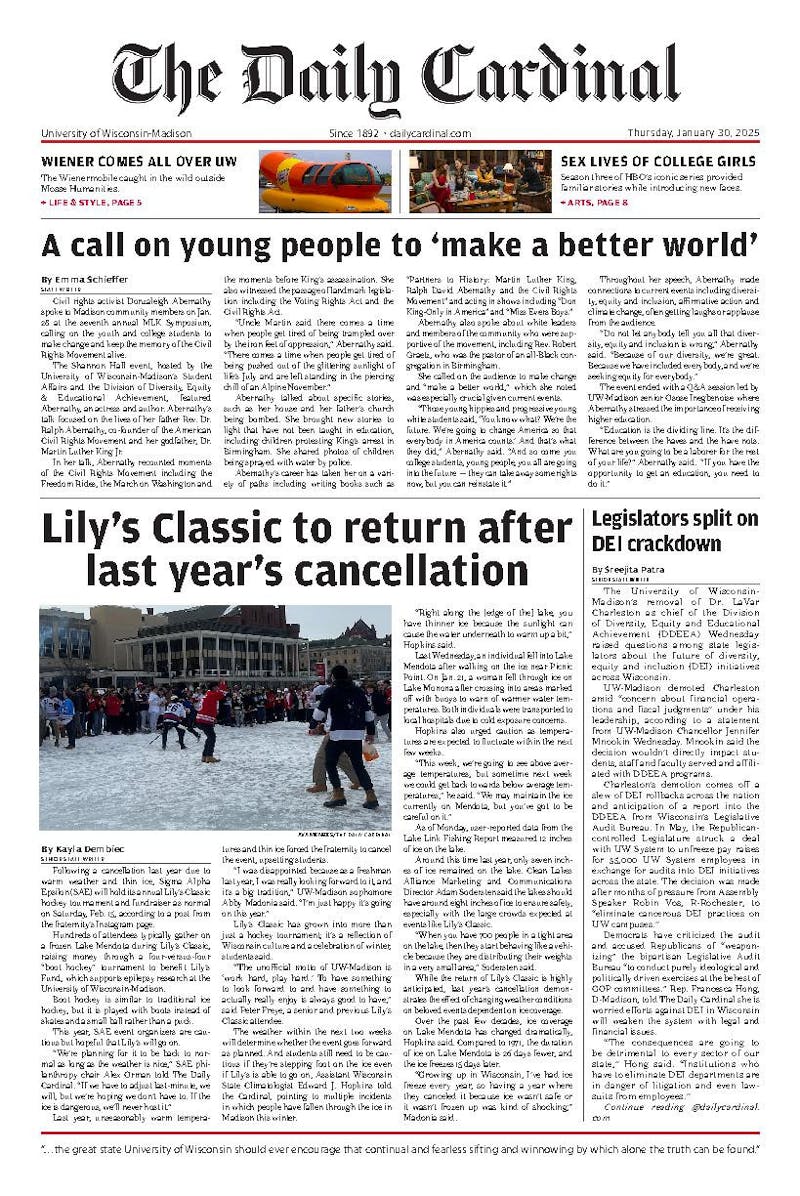Dr. Mae C. Jemison — physician, engineer and astronaut — shared her experiences as a woman of color in science, technology, engineering and math in her presentation at the Martin Luther King Jr. Memorial Lecture Tuesday in Varsity Hall.
Jemison’s lecture was preceded by a performance from the University Gospel Choir, as well as introductions by students in Madison’s engineering master’s program, Chancellor Rebecca Blank and Lieutenant Governor Mandela Barnes.
Jemison asked the audience to recall the last time that they looked up, relating the act not only to her own curiosity but to a general attitude she feels Dr. King embodied.
“When I was a little kid, this all started with looking up. I remember looking up at the sky and wondering what children on the other side of the world saw,” Jemison said. “It was something that connected me. And “look up” is one of those words that always brings us hope. I think very much that connects us with Dr. King.”
In correlation with “looking up,” Jemison expressed Dr. King’s work as a statement of intent and action, urging audience members to not mistake his nonviolence for passivity — and remembering him in a way that is active.
“We honor his legacy by cultivating our talents, by looking up and reaching our potential, and then using that talent to create something positive in the world,” Jemison said. “When I talk about and think about honoring Dr. King, it’s really about, ‘What do I do with my place at the table?’”
In advocating for the idea of using one’s platform for affecting change, Jemison attributes many of her accomplishments to her experiences attending public schools in Chicago, working in developing countries during her time in the Peace Corps and many more experiences.
Dr. Jemison graduated from Stanford and went on to become the first black female astronaut in space, orbiting earth 126 times during her eight-day mission in 1992. Today, Jemison works as an activist for women of color in STEM fields.
“So frequently, people think about the ‘I have a dream speech,’” Jemison said. “But I’m going to ask a question: When you’re sitting at the table, what are you doing with your position? Do you act just like everyone else and mind your table manners?”
Additionally, Jemison spoke of these differing backgrounds and experiences as reasons why diversity, especially in STEM fields, is so important.
Comparing NASA and the Civil Rights Movement, Jemison highlighted the Equal Opportunity Employment Act of 1972 as having paved the way for greater diversity in some of those fields.
“The people in STEM get to do the design, the research, the evaluation,” Jemison stated. “It’s important that we have a lot of different perspectives, because [they] make a difference. Just like the decision to use a certain combination of minerals to build a beautiful fireworks display or to propel a bullet, that’s a decision based on one’s ambitions.”






